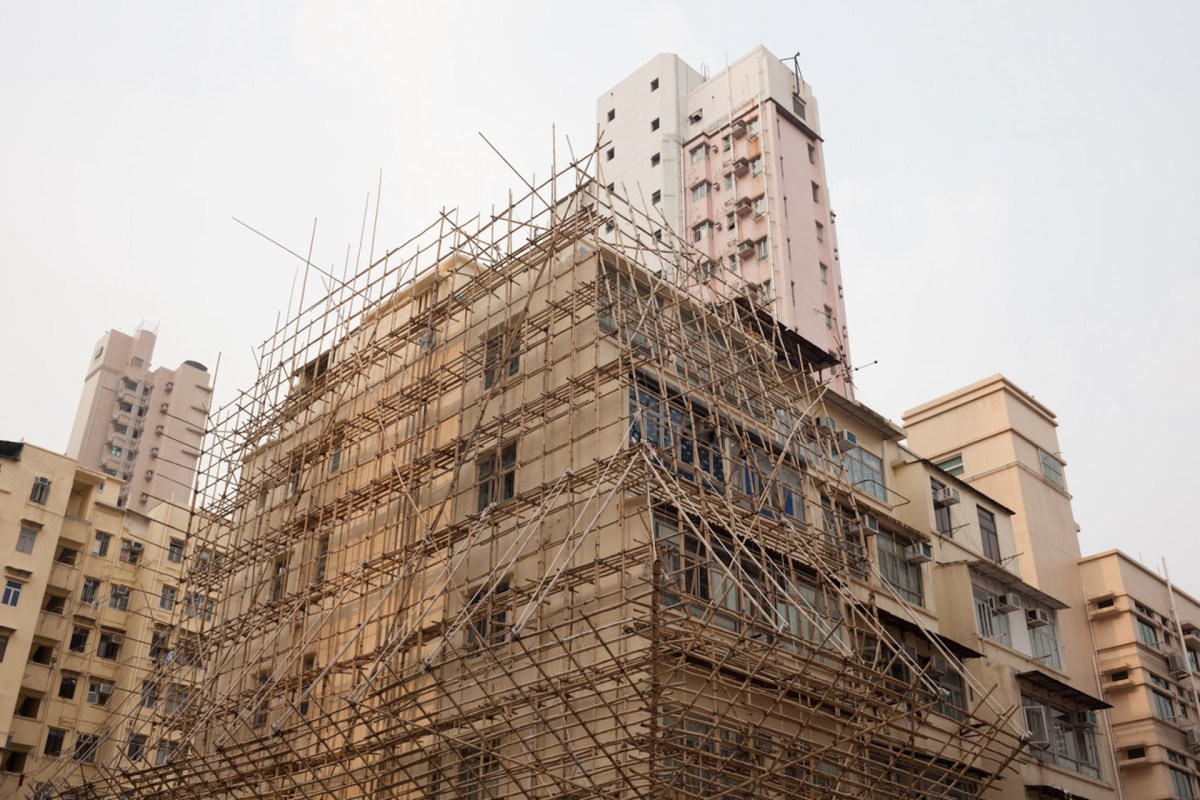Builders around the world rely on steel or aluminum scaffolding to aid in construction, maintenance, and repair. But in Hong Kong, a much more affordable and environmentally friendly material is used for scaffolding: bamboo.
What is bamboo scaffolding?
Bamboo scaffolding is just like the scaffolding you've probably seen around your city — the only difference is the material.
Bamboo is flexible and strong but also lightweight, allowing it to be easily transported through urban areas. It is also a renewable resource that grows right out of the ground, unlike steel and aluminum.
Though it may seem less stable than metal, bamboo scaffolding techniques have been used for centuries throughout Chinese history, dating back thousands of years.
According to the South China Morning Post, there are currently 2,479 registered bamboo scaffolders in Hong Kong. Every year, dozens of students enroll in a course to learn the trade.
"You need courage as well as skill to survive," Wallace Chang, a professor at Hong Kong University's architecture department, said, according to Euronews. "This deters people from going into the industry."
"You have to have a daring heart," said Mo, one of the students learning to become a scaffolder.
Why is bamboo scaffolding good for the planet?
Steel manufacturing is one of the world's most carbon-intensive industrial processes, and it accounts for about 7% of all global carbon dioxide pollution annually. Aluminum also has an incredibly high environmental impact, consuming huge amounts of energy during its refining, creating toxic waste products, and leading to environmental destruction during mining.
Bamboo, on the other hand, is incredibly easy to grow — and in many cases, people can't avoid growing it. It requires very little water and no fertilizers or pesticides and also releases 35% more oxygen into the air when compared with similarly sized trees.
Although bamboo scaffolding may be considered old-fashioned by most of the world, builders are increasingly looking toward techniques involving wood as they seek to create new buildings in the most environmentally friendly way possible.
Join our free newsletter for weekly updates on the coolest innovations improving our lives and saving our planet.









